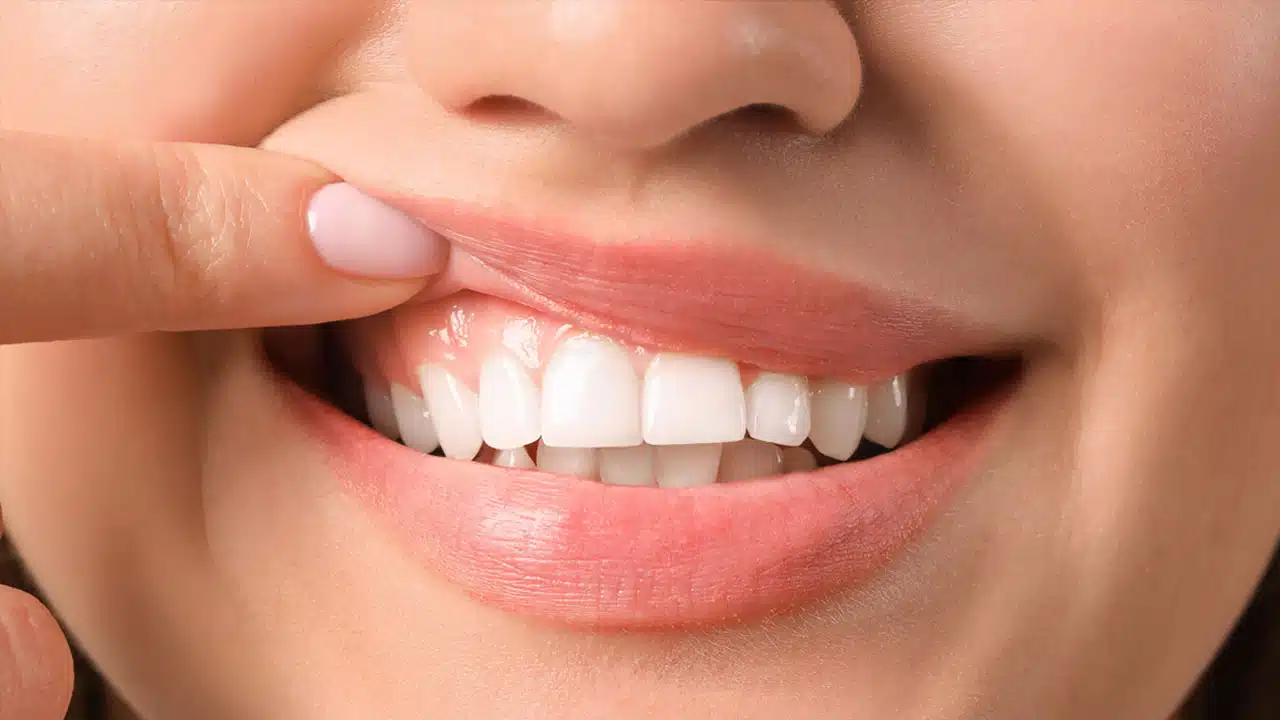
Gum disease is a common problem in the United States, affecting an estimated 42.2% of adults over 30. Keeping your gums healthy is important because they help keep bacteria and food particles out of the spaces between your teeth and below the gum line. When bacteria and food particles are allowed to accumulate, they can cause gum disease.
While gum disease is often painless in its early stages, it can lead to serious problems if left untreated. In some cases, gum disease can also cause pus to develop around the teeth. One way to detect early gum disease is by observing changes in gum color.
What Color Should My Gums Be?
The color of healthy gums can vary depending on an individual’s ethnicity or race, but they typically should be pink. For example, people with darker skin may have gums that appear reddish. Close to the gum line, gums may have a slight pale hue. The color of healthy gums can also depend on different factors, such as medications or illnesses.
What Color are Unhealthy Gums?
Disease-causing bacteria can cause gums to become inflamed, which can sometimes lead to bright red gums. In other cases, the bacteria can cause an infection that results in white or blue gums. And in severe cases, the infection can cause the gums to turn black.
When Should I Call a Dentist?
Some color changes warrant a trip to the dentist. If your gum color is red, it could be a sign of gum inflammation or gingivitis. This is usually caused by a build-up of plaque on the gum line and can be treated with regular brushing and flossing.
If your gum color is pale, it could be a sign of anemia or vitamin deficiency. If your gums are purple, it could signify heart disease.
Sometimes gum discoloration can be caused by simple things like eating certain foods or using certain medications. For example, certain antibiotics can cause gums to appear more red or purple than usual.
Gum Disease Treatments
When you visit your dentist for a hygiene cleaning and exam, they will review your medical history, examine your mouth, measure the groove between your gums and teeth using a dental probe and take dental X-rays. If you are diagnosed with moderate to advanced gum diseases, they may recommend the following treatments:
Scaling and Root Planing
Scaling and root planing is a deep cleaning treatment used to remove plaque and tartar from the teeth and gums. The procedure involves using special instruments to clean below the gum line. It can help to reduce gum inflammation and prevent further damage to the teeth and gums.
Antibiotics
Antibiotics may be prescribed for severe cases of gum disease to help reduce inflammation and kill bacteria. The most common type of antibiotic used for gum disease is metronidazole, which is available in both pill and gel forms.
Antibiotics are typically used for two weeks and may be combined with other treatments such as scaling and root planing.
Surgery
In some cases, surgery may be necessary to treat gum disease. Surgery can be used to remove infected tissue, bone, or teeth that are beyond repair. Two common surgical treatments are gum grafting and gum flap surgery.
Gum grafting is a type of surgery that can replace lost gum tissue and improve the appearance of your smile.
Gum flap surgery involves making incisions in your gums to access the roots for deep cleaning and possibly recontouring the underlying bone if there are any signs of bone loss.
Support Your Periodontal Health with Valley Dental Care of Plainfield
Early detection of gum disease is key to preventing more serious problems. Valley Dental Care of Plainfield is committed to helping you achieve and maintain optimal oral health. We offer non-surgical and surgical treatments for gum disease and periodontal maintenance care to help prevent the onset of periodontitis.
If you are experiencing any symptoms of gum disease, we encourage you to contact us today at (815) 436-6800 to schedule a dental consultation.